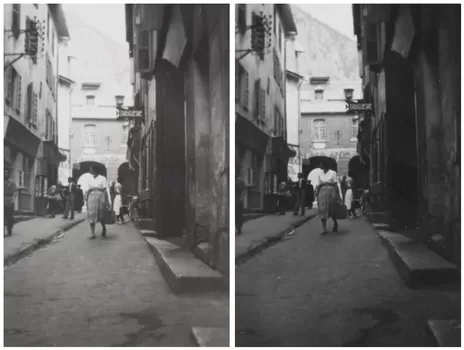Mastering Light Series > Understanding the Exposure Triangle Principle in Photography
Photography is often described as the art of capturing light. At the heart of every compelling photograph lies a delicate balance of exposure – the interplay between aperture, shutter speed, and ISO sensitivity.
This fundamental concept, known as the exposure triangle principle, serves as the cornerstone of photographic technique, empowering photographers to translate their creative vision into captivating images.
The exposure triangle principle encapsulates the relationship between three key elements: aperture, shutter speed, and ISO sensitivity. Each of these elements plays a crucial role in determining the overall exposure of an image, as well as influencing various aesthetic and technical aspects of photography.
We explain the exposure triangle below our reader supported advertiser:
Exposure Triangle Principle chart
The table illustrates how adjustments in one element of the exposure triangle necessitate compensatory adjustments in the other elements to maintain proper exposure.
| Aperture (f-stop) | Shutter Speed | ISO Sensitivity |
|---|---|---|
| Wide (e.g., f/2.8) | Fast (e.g., 1/1000 sec) | Low (e.g., ISO 100) |
| Wide | Fast | Medium |
| Wide | Moderate | High |
| Moderate (e.g., f/5.6) | Fast | Low |
| Moderate | Moderate | Medium |
| Moderate | Slow (e.g., 1/30 sec) | High |
| Narrow (e.g., f/11) | Fast | Very Low |
| Narrow | Moderate | Low |
| Narrow | Slow | Medium |
For example, if you widen the aperture (e.g., from f/5.6 to f/2.8) to let in more light, you may need to use a faster shutter speed or decrease the ISO sensitivity to prevent overexposure.
Conversely, if you narrow the aperture (e.g., from f/2.8 to f/11) to reduce the amount of light, you may need to use a slower shutter speed or increase the ISO sensitivity to maintain proper exposure.
Aperture (f-stop) represents the size of the lens opening, where a smaller f-stop value indicates a wider aperture (more light enters) and a larger f-stop value indicates a narrower aperture (less light enters).
Shutter Speed denotes the duration for which the camera’s shutter remains open, with faster shutter speeds allowing less light to enter and slower shutter speeds allowing more light to enter.
ISO Sensitivity measures the camera sensor’s responsiveness to light, with lower ISO values indicating lower sensitivity (requires more light for proper exposure) and higher ISO values indicating higher sensitivity (requires less light for proper exposure).
Aperture
Aperture refers to the opening in the lens through which light passes to reach the camera sensor. It is measured in f-stops, with smaller f-stop values representing larger apertures and vice versa. Aperture controls the depth of field in an image – the range of distance over which objects appear sharp and in focus.
A wider aperture (lower f-stop value) creates a shallow depth of field, resulting in a blurred background and emphasizing the main subject. Conversely, a narrower aperture (higher f-stop value) increases the depth of field, ensuring greater sharpness throughout the scene.
Shutter Speed
Shutter speed determines the duration for which the camera’s shutter remains open, allowing light to strike the sensor. It is measured in fractions of a second, ranging from fast shutter speeds (e.g., 1/1000 sec) to slow shutter speeds (e.g., 1/30 sec).
Shutter speed controls motion blur in an image – the degree to which moving subjects appear sharp or blurred. A faster shutter speed freezes motion, ideal for capturing fast-moving subjects or scenes with minimal blur.
Conversely, a slower shutter speed introduces motion blur, conveying a sense of movement and fluidity to the image.
ISO Sensitivity
ISO sensitivity measures the camera sensor’s ability to capture light and produce a usable image. It is represented by numerical values, with lower ISO values (e.g., ISO 100) indicating lower sensitivity to light and higher ISO values (e.g., ISO 1600) indicating higher sensitivity.
Increasing the ISO sensitivity allows for faster shutter speeds and/or smaller apertures in low-light conditions, thereby enhancing the camera’s overall performance in challenging lighting situations.
However, higher ISO values may also introduce digital noise or graininess to the image, impacting image quality.
The Interplay of Elements
The exposure triangle principle highlights the interconnectedness of aperture, shutter speed, and ISO sensitivity in achieving optimal exposure. Adjusting one element invariably affects the others, necessitating a delicate balance to maintain proper exposure while achieving the desired creative outcome.
For instance, widening the aperture (lower f-stop) to blur the background may require compensatory adjustments such as increasing the shutter speed or decreasing the ISO sensitivity to prevent overexposure.
Experiments in Bracketing
Bracketing in photography refers to the technique of taking multiple shots of the same scene at different exposure settings. This typically involves capturing one shot at the camera’s metered exposure, then additional shots with intentionally varied exposure settings, such as overexposure (brighter) and underexposure (darker).
Bracketing ensures that at least one image captures the scene optimally exposed, providing photographers with options during post-processing or to ensure they capture the desired image despite uncertain lighting conditions.
While it may seem technical, it only takes a few hours playing with bracketing to see the effects and the importance of getting it right. Once mastered, understanding the exposure triangle is both a technical framework and a source of endless inspiration in our photographic journey.
Mastering the Exposure Triangle
Mastering the exposure triangle principle requires practice, experimentation, and a deep understanding of photographic fundamentals.
Photographers must learn to anticipate the desired aesthetic effects and technical requirements of each scene, adjusting aperture, shutter speed, and ISO sensitivity accordingly. Through continuous exploration and refinement, photographers can unlock the full creative potential of the exposure triangle, elevating their photography to new heights of visual storytelling and expression.
The exposure triangle principle serves as the foundation upon which all photographic techniques and creative endeavors are built. By mastering the delicate balance of aperture, shutter speed, and ISO sensitivity, photographers can harness the power of light to craft compelling images that resonate with viewers on a profound emotional level.

Related stories
Vivian Maier gives a photography lesson in exposure
Vivian Maier Vintage Photography Auction Bargains
Vivian Maier was Phil Donahue’s nanny
The copyright of Vivian Maier’s street photography
Andre Kertesz, a pioneer of street & fine art photography
Sebastião Salgado lens on Humanity’s Struggle and Resilience
Brecht’s Man Equals Man by Theatre of the Deaf
Heinrich Hoffman photographs Adolf Hitler public speaking
Dorothea Lange’s Pioneering Approach to Portraiture
State Library of New South Wales 20th Century photography
The first photograph taken in Australia was by Captain Lucas
Australia’s first professional photographer George B Goodman
The oldest surviving Daguerreotype in Australia, 1845
Photographer Paul Dubotzki in Australia’s WWI Internment Camps
Stanley Kubrick career as a still photographer
Photography Appraisals, Auction Agent and Authentication
The Phenomenon of Everyone’s a Photographer Now
Can I make money as a freelance photographer
The Rise of Smartphone Photography
Navigating the Future of Professional Photography
How Getty Images & Disruptors Changed Photography
National Institute of Dramatic Art (NIDA)
Guide to Collecting Vintage Film Cameras



